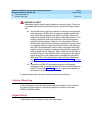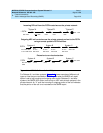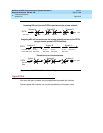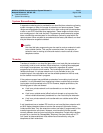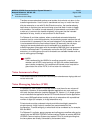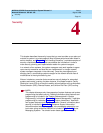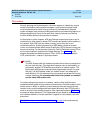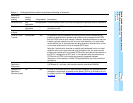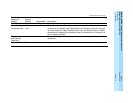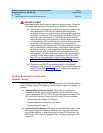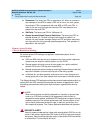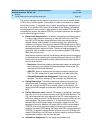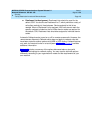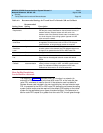
MERLIN LEGEND Communications System Release 6.1
Network Reference
555-661-150
Issue 1
August 1998
Security
Page 4-2Overview
4
Overview 4
Security planning and implementation, like other aspects of networking, require
careful coordination among system managers. Local system business needs
must be balanced with overall routing and security considerations. Network
system managers must combine existing features and new networking features to
safeguard against toll fraud. At the same time, security features must be fine-
tuned to enable efficient calling across the network.
As discussed in earlier chapters, ARS and Remote Access features are used in
combination to allow users to access PSTN trunks connected to other systems in
the network. Such ARS calls are made normally, just as they are in non-
networked systems. System programming of ARS tables, routes for tandem
trunks, and remote access default class-of-restriction (COR) ensures correct and
secure call routing. For the purposes of security, Facility Restriction Levels (FRLs)
are the most important components of these features. The next topic in this
chapter discusses how different types of FRLs—ARS, remote access default
COR, and extension—interact in a private network.
NOTE:
The ARS access code of a networked system should never be assigned to
the non-local dial plan. This might allow network users to inadvertently or
purposefully access PSTN facilities connected to a network system. The
local system ARS access code
cannot
be programmed into the non-local
dial plan; if all ARS access codes in a network match, this safeguard is
more effective. For this reason and for convenience and proper call-routing
in some situations, it is recommended that all the systems in a network
use the same ARS access code.
To enable calling among users on a network, certain calling restrictions are
suspended when people on one system call extensions on another system, while
others remain in effect. In addition, private network trunks and pools of private
network trunks must be safeguarded and treated differently than PSTN trunks in
order to avoid toll fraud through access to other networked systems. Table 4–1
summarizes these operations. The
Suspended
column relates to restrictions only
and indicates whether or not the restriction is applied to calls made to non-local
extensions.
“Facility Restriction Levels and Remote Access” on page 5
discusses security
considerations that require more detailed information.



